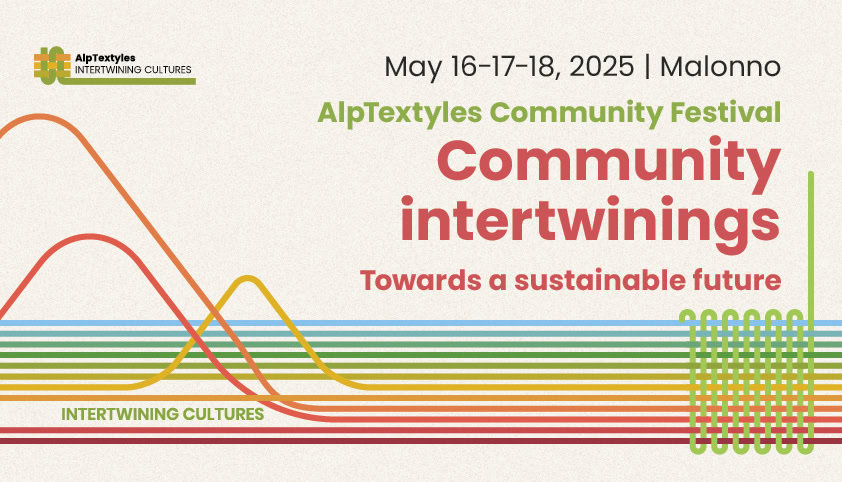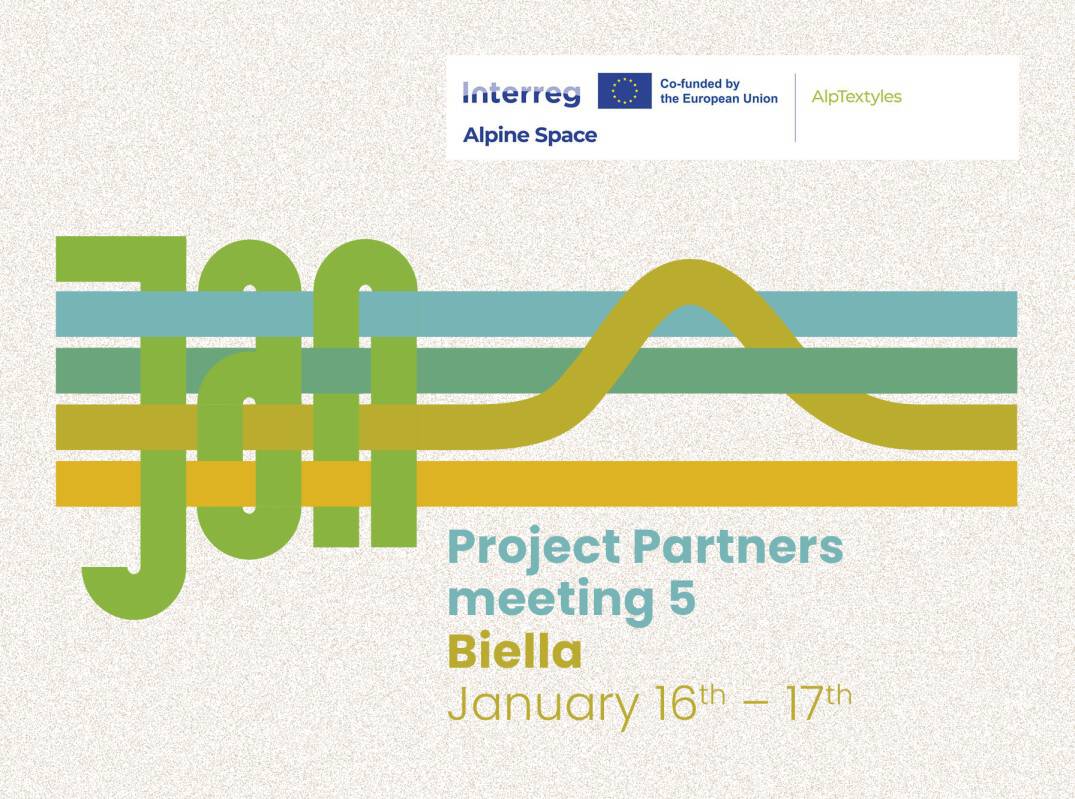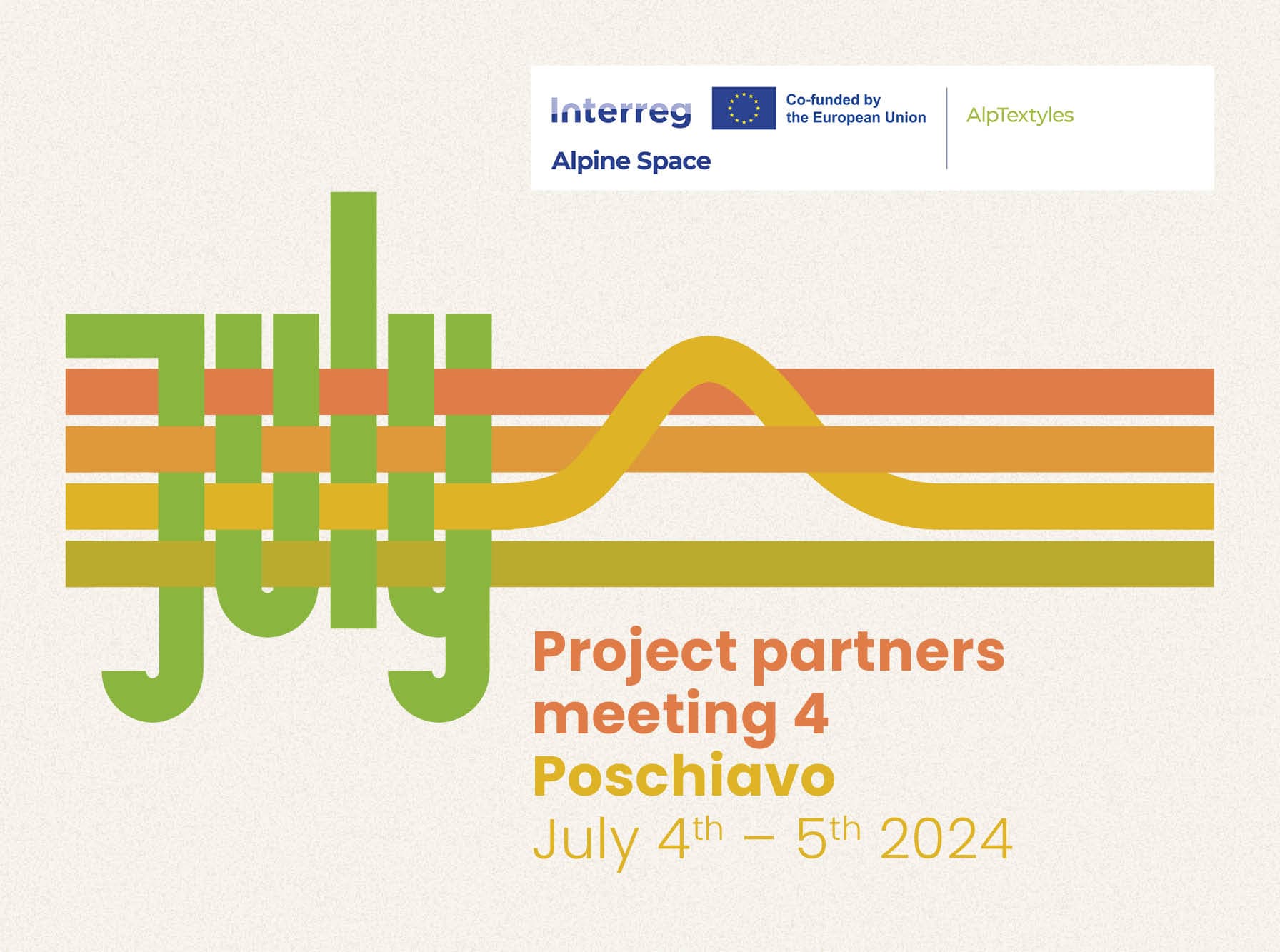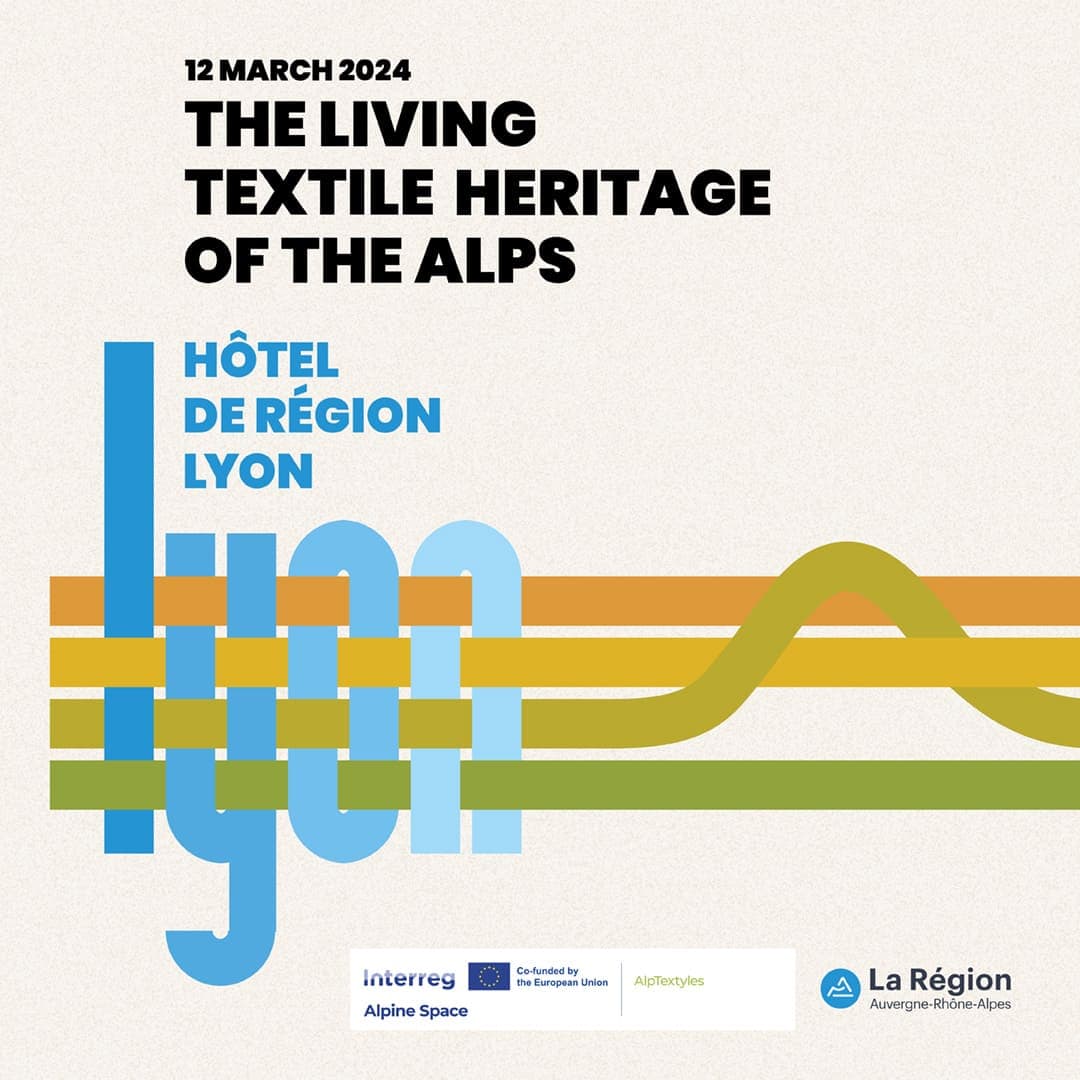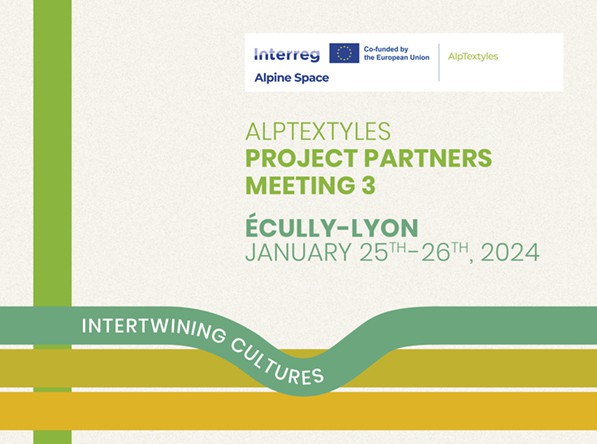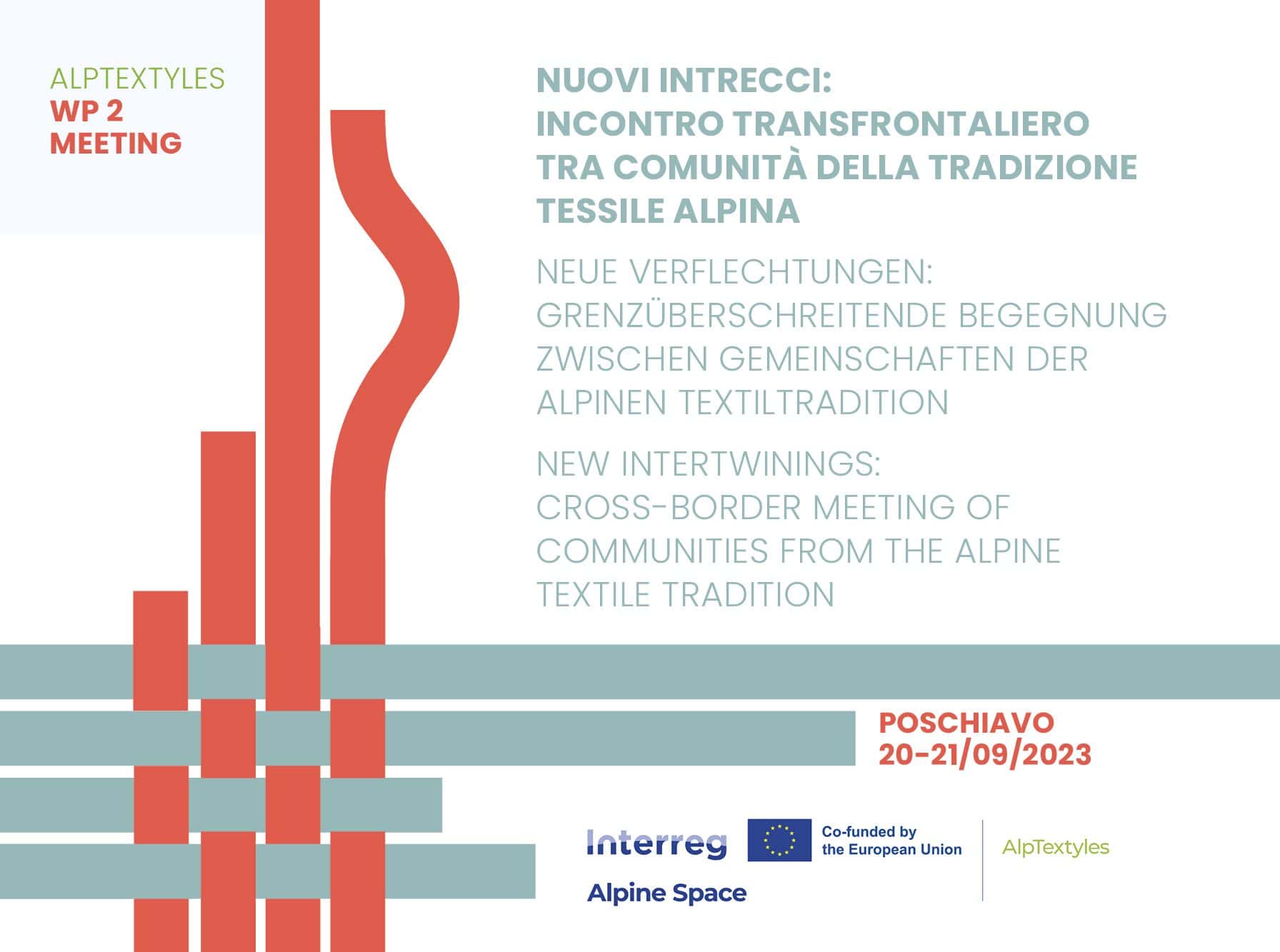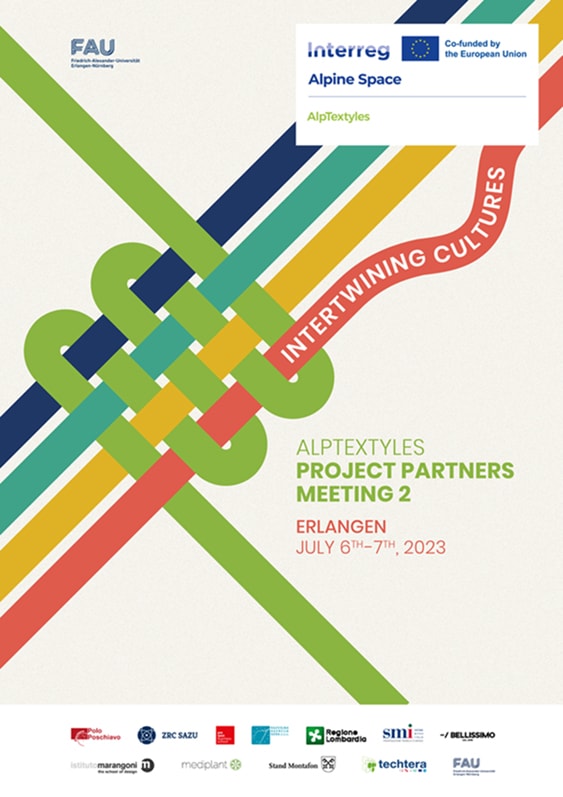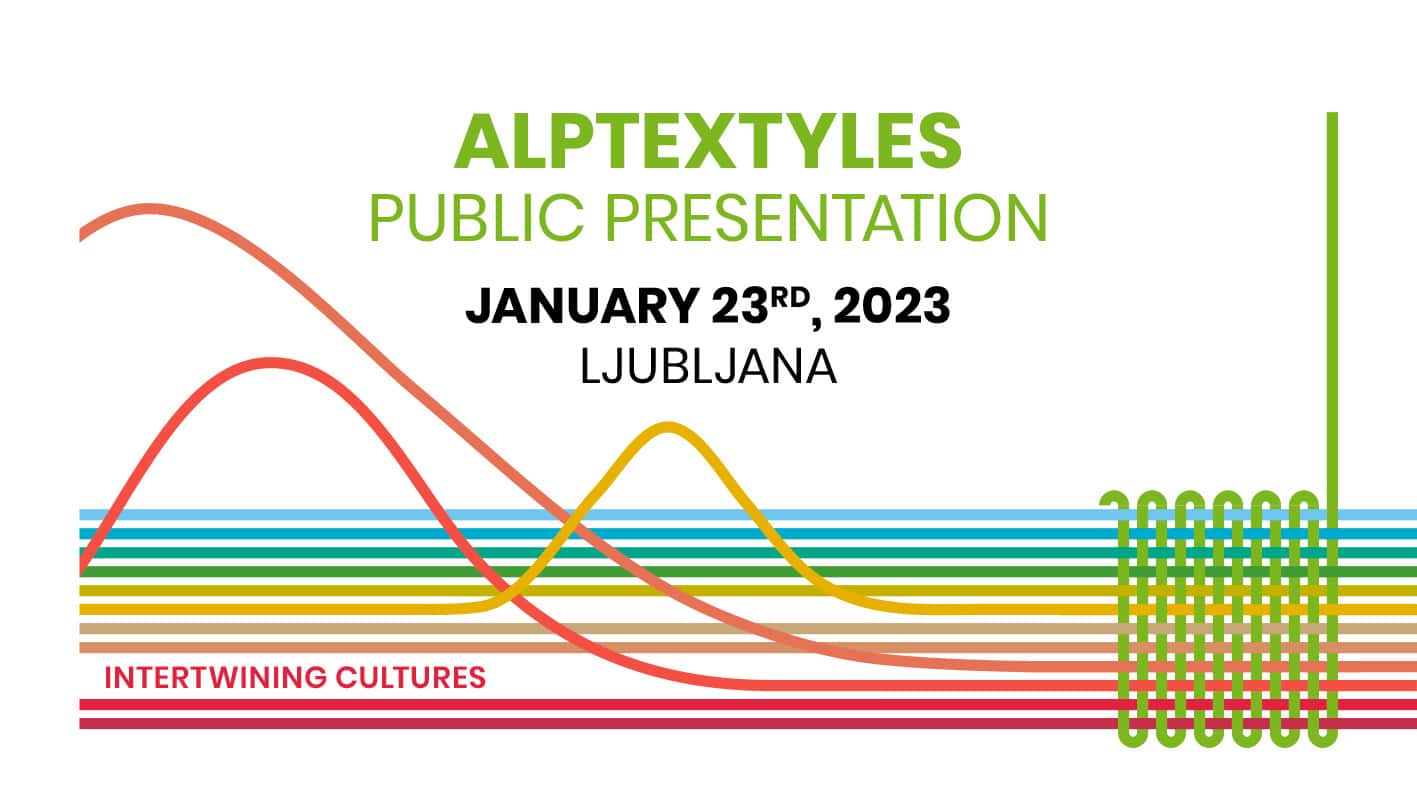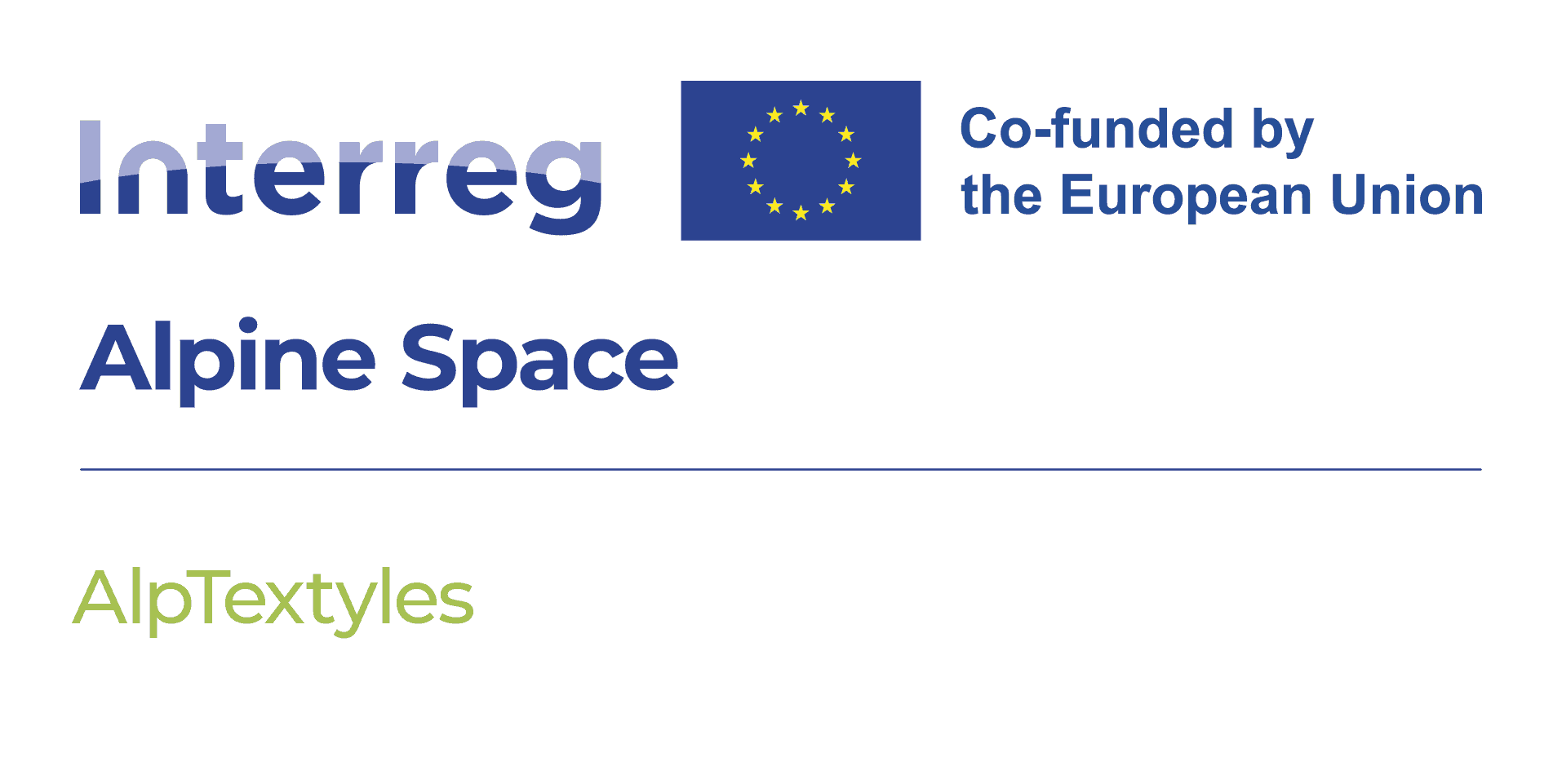
Overview
Textile value chains are amongst the most polluting industries, with a massive potential for CO2 reduction. When we approach the rich textile heritage of the Alps, we see it brimming with specific aesthetics and know-how based on values of circularity and sensitivity to local resources.
So, as consumers grow increasingly critical of globalized value chains and turn to more sustainable lifestyles, the Alpine heritage could contribute to re-territorialize the local textile value chains disrupted by global sourcing and offshore production while boosting natural local resources and projecting an attractive image that justifies the price point of Alpine products.
With its 12 partner organizations from 6 Alpine countries, AlpTextyles gathers precious textile ecosystems to create a common ground of expertise in research and innovation, foster regional development and job creation, and safeguard cultural heritage and circularity.
Factsheet
- 2021 – 2027
- Carbon neutral and resource sensitive Alpine region
- SO 2.2 - Promoting the transition to a circular and resource efficient economy
-
- AG3 Labour market, education and training
- AG6 Natural resources
- 11/2022
- 10/2025
- 2.979.694 EUR
- 1.970.770 EUR
Partners
- 46.3251697510.06081852952586
- 46.0476100514.504711191204319
- 45.78668264.7647662
- 46.1639070514.306674164430577
- 45.48604249.1959558
- 45.47817529.1656178
- 45.06775517.6824892
- 45.42766139.0495351
- 45.78642114.7713117
- 47.075008559.911752486928934
- 46.22503127.2961027
- 49.59787210000000411.004528231227573




























Outcomes
-
Concept for the development of heritage-sensitive & circular textile craft & Industrial products through cross-border matchmaking
Jointly developed by PPs based on WP1 activities & tested in pilot actions 2.1&2.4, the output proposes a replicable & scalable format to develop heritage-sensitive & circular new textile craft & industrial products based on: 1 Concept development; 2 Analysis of missing resources/technologies/skills; 3 Cross-border matchmaking of farmers, breeders, craftspeople, technical/technology providers, experts in heritage safeguarding/textile design/circular design/storytelling; 4 product development. -
Format for communicating the value of heritage-sensitive, circular, cross-border textile products to consumers
Jointly developed by PPs based on WP1 activities & tested in activity 2.1, the output proposes a replicable&scalable communication format to persuade consumers of the value of circular, heritage-sensitive Alpine textile products. The format, based on heritage storytelling principles, will address consumer distrust of sustainability claims (perceivable as greenwashing) & difficulties in promoting products from cross-border value chains (respect to regional/national value chains). -
Innovative formats for the cross-border trainings of youth, students and professionals on the living textile heritage of the Alps and sustainable and circular value chains
Jointly developed by PPs based on WP1 activities & tested in activity 2.2, the output proposes innovative formats to raise awareness about & build capacity on the Alpine textile heritage & circular & resource-sensitive textile design through 1Open contests open to students and youth in the Alps 2Collaboration with Alpine textile schools 3Learning visits to farms, weaving workshops & other sites 4Development of new products & communication approaches targeting the new generations' sensitivities. -
Heritage-sensitive & circular Alpine textile value chains: Orientation Guides and Heritage Safeguarding Toolkits
Output will make accessible project insights to TGs. 1 Orientation Guides will help textile SMEs & business support organisations to establish circular & heritage-sensitive value chains meeting consumer need for postcarbon lifestyles. 2 Heritage Safeguarding toolkit will help cultural institutions & heritage communities document, digitalize, revitalize, protect through IP rights the Alpine textile heritage & engage with new generations & textile designers. -
Heritage-sensitive & circular Alpine textile value chains: Policy Brief
This Policy Brief (PB) will report on the traditional Alpine textile heritage & current state and potential of the Alpine textile sector, providing multi-sectoral strategic recommendations for cultural and textile policies at the regional and macro-regional (i.e., EUSALP) level, also considering the EU strategy for sustainable textiles & the coming EU regulation on geographical indications for heritage textile craft&industrial products. -
"The living textile heritage of the Alps and its sustainable circular future" Massive Online Open Course (MOOC)
The MOOC will raise awareness & build capacity on the living textile heritage of the Alps, from traditional knowhow and aesthetics to its circular and sustainable future. Participants – students and professionals alike – will learn about the cultural added value of heritage-sensitive innovation and storytelling and how to work with heritage communities in respectful manners avoiding cultural appropriation.
Videos
Gallery
- Inspiring cultureArchivio fotografico Valposchiavo | www.istoria.ch
- Preserving natureCourtesy of Rokodelski Center Škofja Loka
- Innovative technologyShutterstock
- Sustainable practicesUnsplash
- Contemporary expertiseCourtesy of Rokodelski Center Škofja Loka
- Community spiritCourtesy of Rokodelski Center Škofja Loka
- Circular fashionShutterstock
- Responsible lifestyleUnsplash
Downloads
-
This handbook is a synthesized guide to the project — an overview of its conceptual foundation, work plan, and partners, the collaborative process and the other guiding principles, the outputs, interaction with other European strategies and projects, and long-term objectives.Download
-
On January 23, 2023, the twelve partner organizations gathered in Ljubljana for the project’s public kick-off before European institutions. Following up, the first noon-to-noon work session focused on the preliminary work on WP1 and the communication strategy.Download
-
Every year, there is a special cross-border festival where 100+ communities across the Alps celebrate the traditional black rye bread making by lighting up their local haven simultaneously. For the 8th edition, Poschiavo (CH) participates with the support of AlpTextyles. The idea was to tell the story of Casa Tomé as the bearer of the bread and textile local heritage, connecting the ancient home with the Musei Valposchiavo through a hanging thread of wool. The focus was the coperta poschiavina, with a call to action to those who still have one to bring it to Casa Tomé for entering it into the local archives — and continue the safeguarding.Download
-
THE LIVING TEXTILE HERITAGE OF THE ALPS “The Living Textile Heritage of the Alps” event marked a significant milestone: it celebrated AlpTextyles’ first year of dedicated research work and findings about the Alpine textile market and value chains. The event was an immersive experience with networking opportunities and creative thinking, featuring keynotes, roundtables, and an exhibition. Participants engaged with leading experts on a variety of topics, exploring the mappings of once-missing steps of the value chains and the growing revalorization of local resources at the cultural, industrial, and policy-making levels. All keynotes are available on AlpTextyles’ YouTube channel.Download
-
ALPINE THREADS The exhibition celebrates AlpTextyles’ research findings, inspired by the unwavering bond between textile craftsmanship and artistic expression. Each canvas, printed on a special ecological material that simulates fabric, is dedicated to the work of a partner. “Alpine Threads” was conceived as a living exhibition that will grow along with the project developments to accompany the events related to AlpTextyles.Download
-
TAKEAWAYS FROM A MULTI-LAYERED RESEARCH DAY The report gathers the keynotes and main takeaways from all speakers of “The Living Textile Heritage of the Alps.” The high-profile line-up includes representatives from EU institutions (DG Department of Growth of the European Commission, EURATEX – European Textile and Apparel Confederation), international organizations (WIPO – World Intellectual Property Organization, IWTO — International Wool Textile Organization), and cultural associations (European Fashion Heritage Association, Musée des Tissus et des Arts Décoratifs), as well a number of project partners.Download
-
REDISCOVER THE PATH OF WOOL The cultural transhumance was conceived as a grassroots event involving all the stakeholders that contribute to the sustainability of the wool supply chain — from shepherds to local associations that have reactivated traditional artisanal skills and restored value to wool, innovating products and highlighting their sustainability and circularity to consumers. AlpTextyles brought together the pastoral world and our community for a day-long journey. The event featured a walk with a flock from morning till dusk along the shepherd’s path, allowing participants to meet firsthand the people involved in the wool supply chain of Valle Camonica.Download
-
CONSUMER INSIGHTS: CIRCULARITY, SUSTAINABILITY, AND MADE IN THE ALPS Consumers can drive the market to support circular, sustainable value chains in the Alpine textile sector, disrupted by globalization. While people do not tend to immediately associate the Alps and textile products, the “place brand” is strongly positive. Critical views against the current globalized textile chains and a willingness to buy local, artisanal, and environmentally friendly products are widespread phenomena, providing an encouraging outlook for the promotion of Alpine textile products.Download
-
COMMUNICATING “MADE IN THE ALPS” As the Alps are associated with nature, heritage, tradition, adventure, exploration, performance, and luxury, brands strategically use geographic locations to infuse their products with symbolic meanings. This paper examines how brands connect themselves to the Alps in their marketing communications, showing that some brands emphasize the Alps as a place of production, while others depict Alpine landscapes as a site of consumption.Download
-
ALPINE TEXTILE MAPPING. ECONOMY, INSTITUTIONS, AND LABELS The alpine textile sector is comparably strong, especially in Northern Italy, in certain regions of Switzerland and Austria, and in some parts of Northern Bavaria. However, it does not receive enough support in terms of institutional regulations, labels, and certifications. Alpine wool encounters financing issues connected to not being classified as an agricultural product, and is negatively impacted by environmental classifications. Meeting these challenges could unlock the potential of a strongly promotable sector.Download
-
MAPPING ALPINE WOOL. PRODUCTION NETWORK, VALUE CREATION, AND FOOTPRINT Due to global concentration processes and the increasing importance of synthetic fibers, the wool sector is weakening, both in the Alps and worldwide. However, Alpine wool, if adequately supported, has great economic potential. Up-to-date marketing strategies, improved networking, technical innovations such as sustainable production processes, and pilot actions to create inspiration can strengthen the sector.Download
-
ALPTEXTYLES: BEAUTY UNVEILED Istituto Marangoni delves into the open questions on the relations between the Alps and contemporary creativity, threading a visual journey that connects it to traditions of the past, and challenges of the future. Unveiling the essence of the Alps in reference to the fields of fashion, and design, it offers a stimulus for creative and innovative visions. Visual research on aesthetic values can also facilitate innovation and experimentation with new codes and evocative languages.Download
-
ALPINE TEXTILE HERITAGE. AN OVERVIEW Knowledge of the textile heritage and production history in the Alps is fragmented at the local, regional, and national levels. ZRC SAZU has researched the production and use of textiles in traditions and current practices in the Alpine region, focusing on wool, linen, and silk, as well as aspects of aesthetics and costumes. The research also shows how resource sensitivity rooted in local customs can inspire current circular practice, highlighting key milestones and traditional aspects of textile production to promote sustainability across the industry.Download
-
MAPPING CONSUMER PERCEPTIONS OF TEXTILES “MADE IN THE ALPS” emlyon lifestyle center at emlyon business school focuses on consumer communication strategies to justify premium prices, fostering appreciation for sustainable Alpine textile products. “Made in the Alps” can benefit from an added symbolic value, but there is a gap in consumer perception: the positive Alpine image, tied to nature and artisanal know-how, is more linked to tourism consumption than local production. Moreover, except for traditional attire, textiles are absent in consumer perception, which align with brands’ emphasis on sports and luxury.Download
-
MAPPING VALUE CHAINS OF THE TEXTILE INDUSTRY IN THE ALPS As per Alpine textile production, FAU’s work underlines the coexistence of two distinct value chains differing in scale and product segments: while the global part features highly standardized fibers (i.e., Merino wool), the regional part emphasizes the revaluation of wool for local production. Additionally, the research highlights the gap between Alpine textile institutions and Alpine certifications and labels.Download
-
ELEVATING VISION BY TRADITION: ALPINE BEAUTY UNVEILED How do contemporary designers turn the mountains’ aesthetic elements into original interpretations for new products? The work by Istituto Marangoni unravels how the perception of the Alps has changed throughout the centuries, from a dangerous and inhospitable place populated by beasts and demons to a landscape for the sublime and spiritual elevation — a beauty that allows textile heritage to communicate resilience, transparency, and celebration.Download
-
RESOURCES TURNED INTO WASTE? FROM THE PAST TO THE FUTURE OF WOOL, FLAX, AND SILK IN THE ALPS ZRC SAZU’s research untangles the rich textile traditions and innovation in the Alps, revealing the intricate relationships between natural and social dynamics. Combing through Alpine textile history from prehistory to contemporary times, the work stresses how the intangible cultural heritage of local textile communities reflects their cultural, artistic, economic, and educational values. In this sense, including textile practices on national and UNESCO lists is pivotal to safeguarding them and the liveliness of the communities.Download
Project calendar
